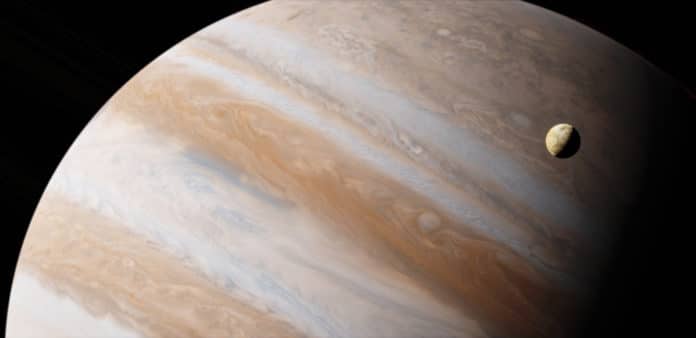For decades, scientists are searching for life on other planets, where water exists or has previously existed. Last year, scientists detected the signatures of phosphine in Venus’s atmosphere, which signifies the possibility of life in clouds.
However, such analyses usually neglect the role of water activity, which measures the relative availability of water in habitability.
A new study by the Queen’s University Belfast suggests that it isn’t the quantity of water that matters for making life viable; instead, the water activity does.
To understand the water activity of the atmospheres of a planet, scientists have come up with a new approach. They developed a method that allows them to study the sulphuric acid clouds of Venus. They found that the water activity was more than a hundred times below the lower limit at which life can exist on Earth.
When they applied this approach to Jupiter, it was found that Jupiter’s clouds have a high enough concentration of water. The results also demonstrate that Jupiter‘s clouds have the correct temperature to support life.
Dr. John E. Hallsworth from the School of Biological Sciences at Queen’s said, “Our research shows that the sulphuric acid clouds in Venus have too little water for active life to exist, based on what we know of life on Earth. We have also found that the conditions of water and temperature within Jupiter’s clouds could allow microbial-type life to subsist, assuming that other requirements such as nutrients are present.”
“This is a timely finding given that NASA and the European Space Agency just announced three missions to Venus in the coming years. One of these will take measurements of Venus’s atmosphere that we will be able to compare with our finding.”
Co-author of the report, an expert on physics and chemical biology of water, Dr. Philip Ball, commented: “The search for extraterrestrial life has sometimes been a bit simplistic in its attitude to water. As our work shows, it’s not enough to say that liquid water equates with habitability. We’ve got to think too about how Earth-like organisms actually use it – which shows us that we then have to ask how much of the water is actually available for those biological uses.”
Co-author of the report, NASA-based planetary scientist Prof Christopher P. McKay, said: “We derive water activity of atmospheres without a model of any sort, based only on direct observations of pressure, temperature, and water concentration.”
Dr. Hallsworth added: “We have also performed calculations for Mars and Earth and show that these calculations can be done for planets outside our solar system. While our research doesn’t claim that alien (microbial-type) life does exist on other planets in our solar system, it shows that if the water activity and other conditions are right, then such life could exist in places where we haven’t previously been looking.”
Journal Reference:
- Hallsworth, J.E., Koop, T., Dallas, T.D. et al. Water activity in Venus’s uninhabitable clouds and other planetary atmospheres. Nat Astron (2021). DOI: 10.1038/s41550-021-01391-3
